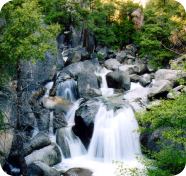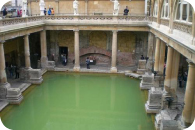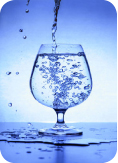 The amount of water on earth is estimated to be approximately 1.4 billion km3, out of which only 3% is so called sweet water. However, practically 2.7% of this quantity of sweet water is in glaciers, groundwater and as a soil capillary moisture. Part of the sweet water that is updated on the Earth is 40,000 km3, but they are temporally and spatially uniformly spaced on the planet. In many areas there is a water shortage, which means that there is not optimal amount of usable water quality at the right place and right time.
***
Over eighty countries worldwide need water. The shortage in the coming decades will increasingly come to the fore because of the progressive increase of population in the world. Expected growth of population in the world is from the current 5.5 billion to about 8 billion in the 2025. year. Globally, the annual rate of increase of water consumption is about 2.3%, and according to the assessment it is doubled every two decades.
***
An increasing shortage of potable water creates serious problems - political and economic, which often leads towards world wars for water. Currently out of 10 people in the world 4 of them don’t have water. Impure water causes 80 percent of all illnesses and deaths in developing countries. Polluted water kills a child every eight seconds in the world. In the following 25 years half of the Earth population will not have potable water.
***
 Ancient Romans built the Empires led by the drinking water sources positions. At that time the public beaches were particularly popular which were primarily used for the purpose of health maintenance. Archaeological findings indicate that there have already been organized systems of water supply of cities in the period of Roman domination in this region. Modern water supplies in Montenegro appeared in late nineteenth century, first in Cetinje, but the introduction of water to the cities took place slowly. Immediately after World War II (1949.) only slightly more than 15 percent of the population had access to water supply systems.
***
Water was used as inspiration for many artists. 1480. Sandro Botticelli in his masterpiece "The Birth of Venus" used water as a theme and a symbol of fertility and life. Values of water for the first time were officially recognized on 26th May 1605. by the King of France, Henry IV. The first code for the beaches and mineral springs monitoring was written then. Later, Louis XVIII, ordered in early 1632, that the natural mineral water in bottles must be transported to "sick, and water which was enriched by God's gift helped them to get well."
***
Water is an extremely important nutrient that can be taken not only when a man is thirsty. It is recommended that older people should take 6-8 glasses a day, 8-10 glasses for adults, and during the summer months up to 12. For sports and recreation fans it is important to take additional 0.5 l. In this way the immunity is strengthened, digestion is improved and a healthy life is ensured. The process of goods exchange is intensified, the kidneys are relieved, the heart and blood circulations are strengthened, the level of concentration and working capacity is raised, the consequences of stress are reduced, skin elasticity is promoted...
***
 Scientists believe that water is the basis of life. It is the largest and most important part of our body. At the time of fetal life the body contains 90% water, and 75% of infant’s body. Maturing body water percentage decreases, which is especially visible in an older age. In early pregnancy most women encounter with nausea and vomiting, which is a consequence of insufficient intake of water. The only source of water for the fetus is mother. High values of progesterone, a hormone that placenta excretes, are valuable in ensuring a soft uterus and prevent contractions in the wrong time. Urinary bladder and meatus urinarius are made of smooth muscle, which under the influence of progesterone reduces the activity of the same mechanism. The result: slow excretion of urine and infection. Sufficient water intake stimulates the kidneys to function properly function, reducing the possibility of infection and other difficulties, while improving intestines function.
***
According to the forecasts of the European Commission, most of the EU countries will face water shortage already in 2070. In Brussels they say that the droughts, which are more frequent in Europe over the past three decades, cost the economy of European countries 138 billion dollars. Officials in Brussels are determined to make pressure on EU member states to more rational water use, in industry and everyday life. Radical price increases and saving water are discussed as well.
***
I n the world scale, some bottled waters are 1,000 times more expensive than thosefrom the taps. Liter of bottled water is in some cases more expensive than the liter of fuel. Last year, Americans spent about $ 11 billion buying 31.2 billion liters of bottled water. n the world scale, some bottled waters are 1,000 times more expensive than thosefrom the taps. Liter of bottled water is in some cases more expensive than the liter of fuel. Last year, Americans spent about $ 11 billion buying 31.2 billion liters of bottled water.
***
|